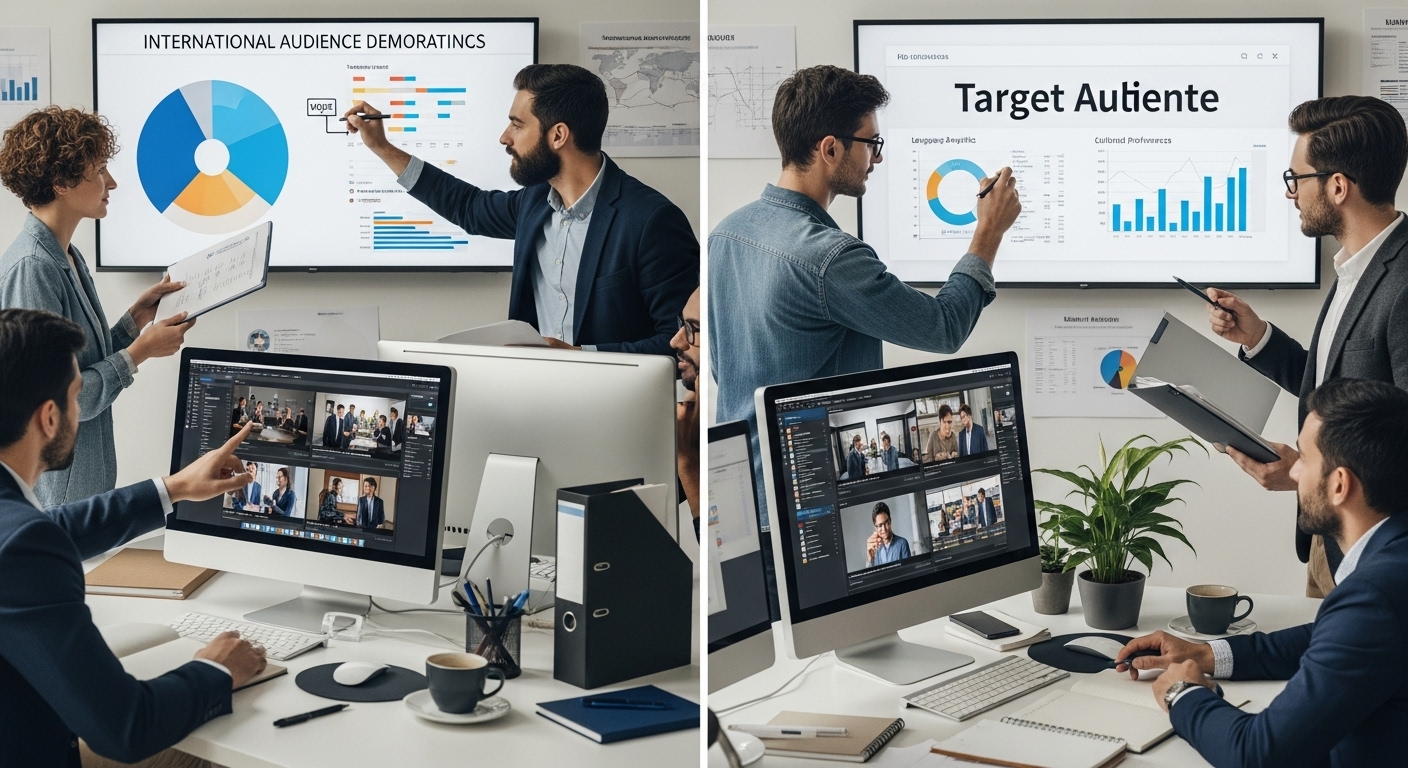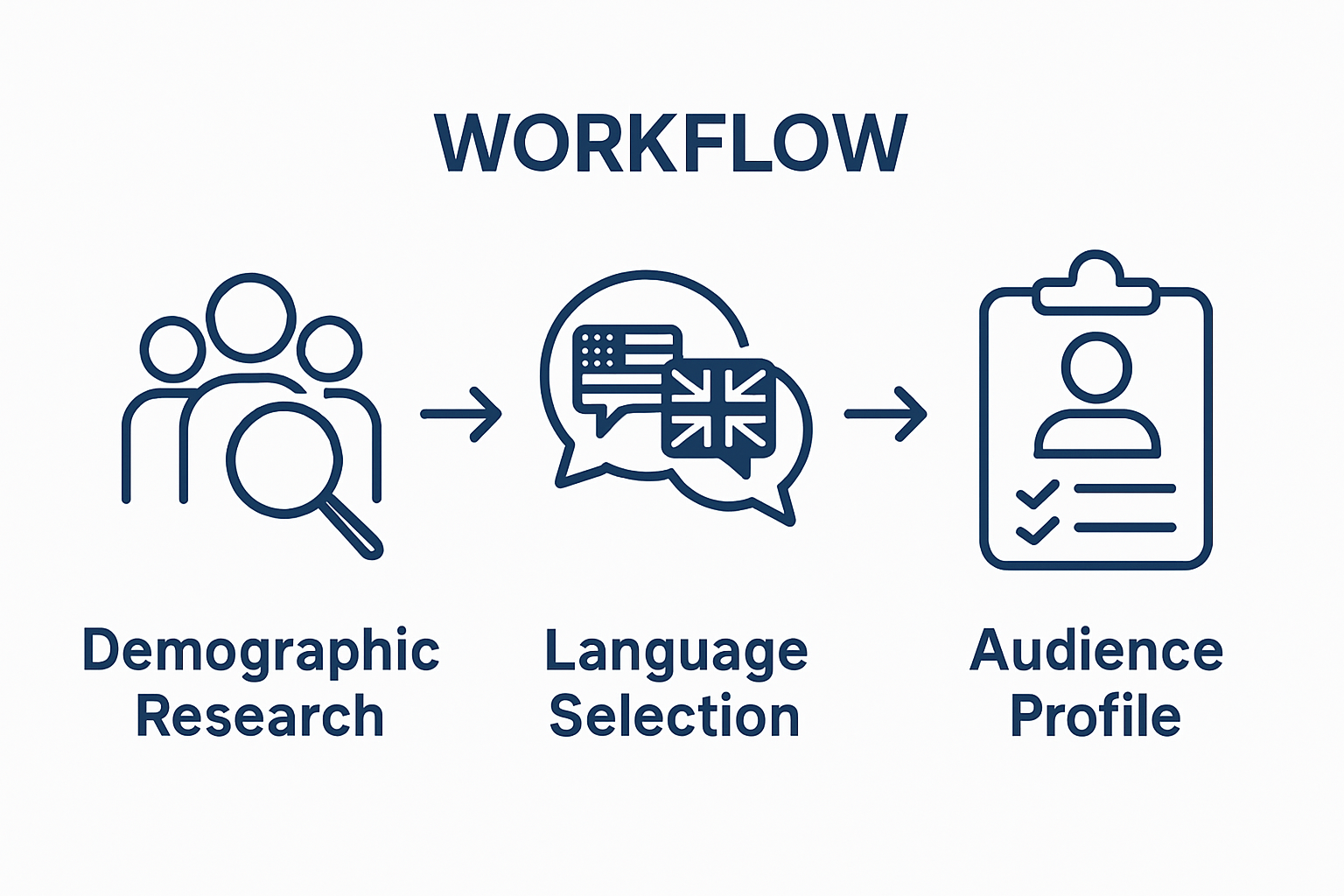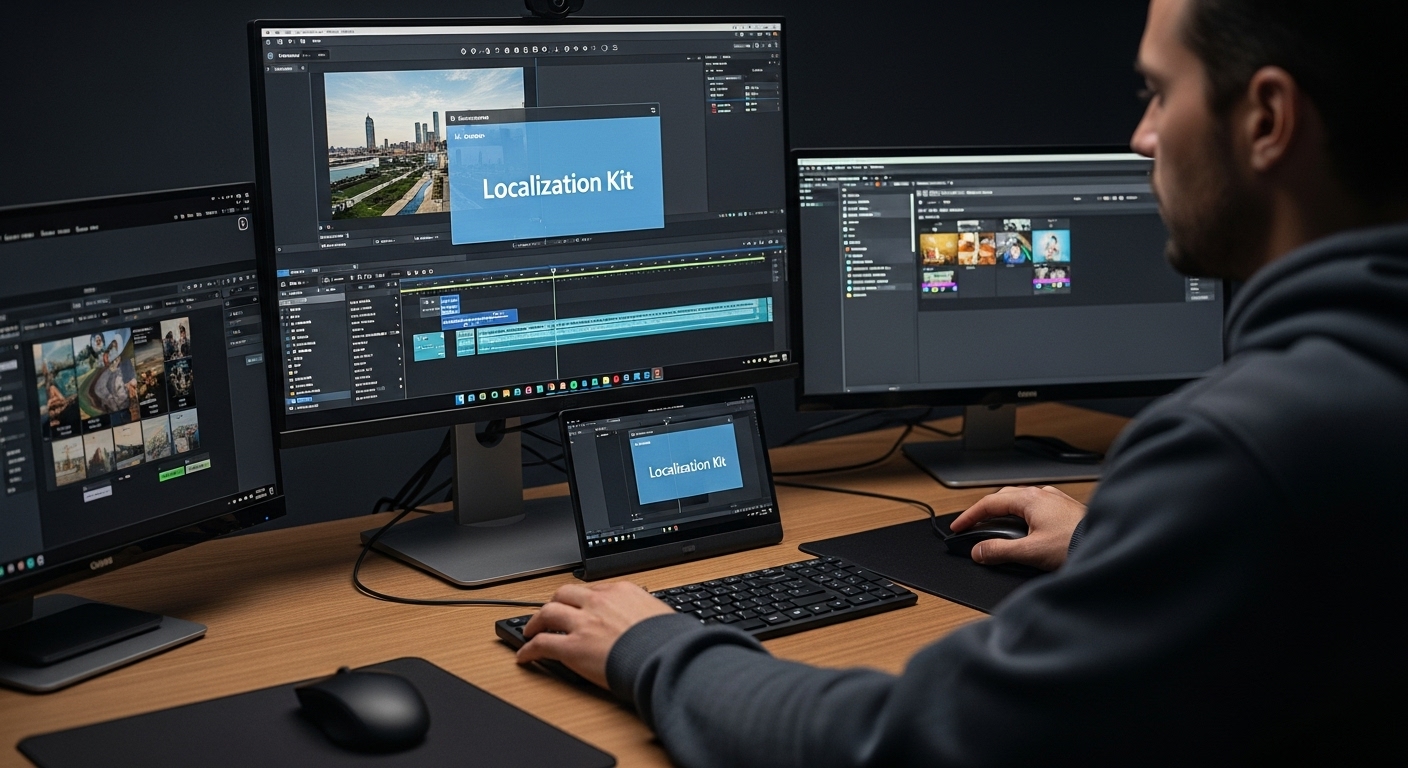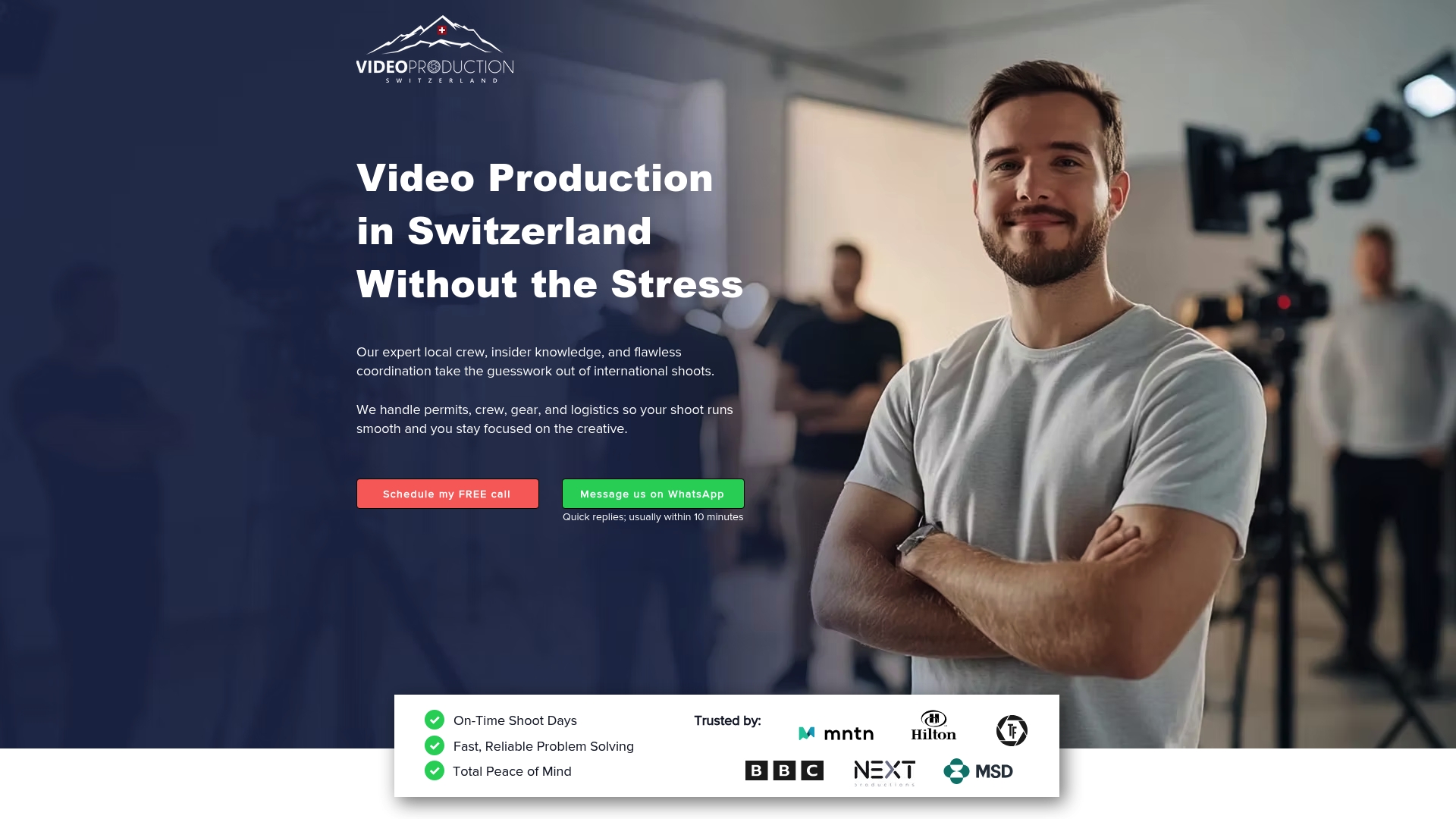Localize Video for Global Impact in 2025
- info1419758
- Sep 12
- 10 min read

Getting your video seen worldwide is more than just hitting upload and selecting another language. Studies show that detailed audience mapping can prevent costly mistranslations and cultural mistakes before you even start translating a word. Surprising, right? Most international video campaigns struggle not because of bad translation tech, but because they skip the core step of truly understanding who will be watching and what actually matters to them in each language and culture.
Table of Contents
Quick Summary
Key Point | Explanation |
1. Identify your target audience first | Define who will watch your video and their language preferences to shape your localization strategy effectively. |
2. Prepare video content meticulously | Conduct a content audit and create localization-friendly materials before translation for better cultural resonance. |
3. Choose professional localization tools | Utilize specialized translation services and platforms to ensure quality and cultural alignment in your video. |
4. Implement structured project management | Establish clear timelines and responsibilities to streamline the localization process and maintain coordination. |
5. Verify quality through rigorous testing | Assemble a review team to ensure linguistic accuracy and emotional impact, validating the localized video before release. |
Step 1: Define Your Target Audience and Languages
Successful video localization begins with precise audience identification. Before translating a single word, you must understand exactly who will watch your content and which languages they speak. This initial step determines the entire trajectory of your video localization strategy.
Start by conducting comprehensive demographic research specific to your video’s purpose. Are you targeting business professionals in Japan, students in Brazil, or consumers in Germany? Each audience requires a nuanced approach. Gather precise data about age ranges, professional backgrounds, educational levels, cultural contexts, and primary language preferences. Detailed audience mapping prevents costly mistranslations and cultural misalignments.
Language selection demands strategic thinking beyond simple translation. According to research in multilingual communication, localized video content must consider not just linguistic translation but cultural resonance. This means analyzing regional dialects, understanding cultural references, and ensuring your message maintains its core meaning across different linguistic landscapes.
Your audience definition should include:
Primary spoken languages
Geographic regions of target viewers
Cultural communication preferences
Professional or personal context of video consumption
Practical tools like market research platforms, social media insights, and demographic analytics can help refine your audience profile. Google Analytics, Facebook Audience Insights, and specialized market research services provide granular data about international viewer segments.
Verify your audience definition by cross referencing multiple data sources. A robust audience profile will include quantitative metrics like population size and language prevalence, alongside qualitative insights about communication styles and cultural nuances. This comprehensive approach ensures your localized video will genuinely connect with intended viewers, transcending mere linguistic translation to create meaningful cross cultural communication.

Step 2: Prepare Your Video Content for Localization
Video localization demands meticulous content preparation before translation begins. This critical stage determines whether your final product will resonate authentically across different cultural landscapes. Technical and creative preparation is fundamental to successful international video communication.
Initial content preparation requires a comprehensive content audit. Review your existing video materials, identifying elements that might require modification. This includes examining dialogue scripts, graphics, text overlays, and cultural references that could potentially confuse or alienate international audiences. Some visual elements might need complete redesign to maintain message integrity across different cultural contexts.
Our guide on video production best practices recommends creating localization-friendly source content. This means designing videos with international audiences in mind from the start. Use neutral backgrounds, minimize text-heavy graphics, and craft dialogue that translates cleanly across languages. Avoid idiomatic expressions, regional humor, or culturally specific references that might not translate effectively.
Technical preparation involves creating a comprehensive localization kit. This kit should include:
High resolution source video files
Separated audio tracks
Editable graphic templates
Detailed script with timecodes
Reference style guide for tone and messaging
Consider working with professional translators and cultural consultants during this stage. They can provide insights into potential linguistic and cultural adaptation challenges. Some content might require complete reimagining rather than direct translation to maintain its intended emotional impact.
Verification involves carefully reviewing each element of your content preparation. Confirm that graphics can be easily edited, audio tracks are clean and separate, and your source materials provide enough flexibility for comprehensive localization. A well-prepared video transforms from a potentially problematic translation project into a smooth, culturally adaptive communication tool.

Step 3: Select Localization Tools and Professional Assistance
Selecting the right localization tools and professional assistance transforms your video from a generic production to a globally resonant communication piece. Professional support is not a luxury but a strategic necessity in creating culturally nuanced video content that connects authentically across international markets.
Begin by evaluating professional translation and localization services specialized in video production. Look for providers with proven track records in your specific industry and target languages. Professional agencies offer comprehensive services including linguistic translation, cultural adaptation, voice-over recording, subtitling, and cultural consulting. Experienced teams understand the subtle differences between mere translation and meaningful cultural localization.
Our guide on video production best practices emphasizes the importance of selecting tools that support seamless multilingual workflows. Professional localization platforms like Smartling, Phrase, and Crowdin offer integrated solutions for video translation management. These platforms provide features such as:
Collaborative translation environments
Automatic subtitle generation
Translation memory systems
Version control for multilingual content
Quality assurance checks
Consider both technological tools and human expertise. Automated translation technologies have advanced significantly, but they cannot replace the nuanced understanding of professional translators and cultural consultants. Machine learning algorithms can provide initial translations, but human professionals ensure accuracy, cultural sensitivity, and emotional resonance.
Verify your localization toolkit by conducting pilot tests with a small segment of your video. Request sample translations from multiple providers, compare their approaches, and assess the cultural appropriateness and linguistic accuracy. A comprehensive verification process includes linguistic review, cultural relevance assessment, and technical compatibility checks. The goal is not just accurate translation but creating a video experience that feels native to each target audience.
Step 4: Execute the Localization Process Efficiently
Executing a video localization project requires strategic coordination and precise workflow management. Efficiency is the cornerstone of successful international video adaptation, transforming complex multilingual production into a streamlined, repeatable process.
Initiate the localization process by establishing a comprehensive project management framework. Create a detailed timeline that includes translation, voice-over recording, subtitling, and cultural adaptation stages. Assign clear responsibilities to each team member, ensuring transparent communication channels and accountability. Professional project management tools like Asana, Trello, or specialized localization platforms can help track progress and maintain synchronization across multiple teams and languages.
Our guide on video production best practices recommends developing a standardized workflow that minimizes redundant efforts. This involves creating template documents, establishing consistent terminology databases, and implementing quality control checkpoints throughout the production process. According to research on learning experience localization, systematic process re-engineering can significantly reduce production time and improve overall content quality.
Key workflow components should include:
Parallel translation and adaptation processes
Simultaneous voice-over and subtitle preparation
Regular cross-team communication checkpoints
Integrated quality assurance stages
Flexible revision mechanisms
Technical synchronization is crucial during execution. Ensure all team members use compatible file formats, maintain version control, and have access to shared resources. Cloud-based collaboration platforms enable real-time editing, commenting, and file sharing across global teams. Professional translators should work closely with cultural consultants to maintain the video’s original intent while adapting to local nuances.
Verification involves comprehensive review processes. Conduct multiple rounds of quality checks, including linguistic accuracy, cultural appropriateness, technical synchronization, and emotional resonance. Request native speakers from target regions to provide final feedback, ensuring the localized video feels authentic and engaging. A successful localization process transforms your content from a generic production to a culturally intelligent communication tool.
Step 5: Verify Quality and Consistency of Localized Video
Quality verification represents the critical final checkpoint in your video localization journey. Rigorous testing transforms good translations into exceptional cross cultural communication. This stage is not about catching errors but ensuring your message remains powerful and authentic across different linguistic landscapes.
Begin the verification process by assembling a diverse review team that includes native speakers, cultural experts, and professional linguists from each target region. These specialists will provide nuanced insights beyond traditional translation checks. Their expertise helps identify subtle cultural misalignments, tone inconsistencies, and potential misinterpretations that automated tools might miss.
Here is a checklist table to help you verify the quality and consistency of your localized video, ensuring it meets all the critical criteria before launch.
Verification Area | What to Check | Who Reviews | Tools/Methods |
Linguistic Accuracy | Natural language flow, no mistranslations | Native speakers, linguists | Manual review, reference scripts |
Cultural Appropriateness | Sensitive to local customs and norms | Cultural experts | Focus groups, cultural review |
Technical Synchronization | Subtitles and audio align perfectly with visuals | Video editors, linguists | DaVinci Resolve, Premiere Pro |
Visual Consistency | Graphics and text match across language versions | QA team | Side-by-side video comparisons |
Emotional Resonance | Message feels authentic to target audience | Local testers, reviewers | User feedback, preview screenings |
Our guide on understanding video production essentials recommends implementing a structured multi-stage review process. According to research on learning experience localization, systematic quality assurance can dramatically improve content reception and audience engagement.
Key verification criteria should include:
Linguistic accuracy and natural language flow
Cultural appropriateness and sensitivity
Technical synchronization of subtitles and audio
Visual consistency across different language versions
Emotional resonance with target audience
Utilize specialized video quality assessment tools that provide frame-by-frame analysis. Software like DaVinci Resolve, Adobe Premiere Pro, and specialized localization platforms offer comprehensive review features. These tools enable side-by-side comparisons, allowing reviewers to track changes and maintain consistent visual and auditory quality across different language versions.
Verification success means your localized video feels native to each target audience. Conduct final user testing with representative viewer groups from different regions. Their feedback provides the ultimate validation, confirming that your video transcends linguistic boundaries and communicates its core message effectively. Remember, successful localization is not about perfect translation but about creating a universally compelling storytelling experience.
Step 6: Distribute and Promote Your Localized Video Globally
Global video distribution demands a strategic, multilayered approach that transcends traditional marketing techniques. Your localized video is now a powerful cross cultural communication tool, ready to engage diverse audiences across different digital landscapes. Successful global distribution requires nuanced understanding of regional digital ecosystems and targeted promotional strategies.
Begin by mapping out digital platforms specific to each target region. While YouTube and Vimeo offer global reach, certain regions have unique preferred platforms like Youku in China, VK in Russia, or Dailymotion in France. Our guide on future video marketing trends emphasizes the importance of platform diversity in international content distribution.
According to research on global multimedia content distribution, understanding geographic information can significantly enhance content delivery. This means tailoring your distribution strategy to each region’s digital consumption habits, preferred social media channels, and local content preferences.
Key distribution channels should include:
Regional social media platforms
Local streaming services
Industry specific digital networks
Targeted advertising channels
Community and professional forums
Professional localization extends beyond translation into strategic promotion. Collaborate with local influencers, industry experts, and content creators who understand the nuanced communication styles of their regions. These partnerships can dramatically amplify your video’s reach and credibility. Consider creating region specific teaser content, behind the scenes materials, or complementary social media campaigns that resonate with local audiences.
Verification of successful global distribution involves tracking comprehensive analytics across different platforms. Monitor engagement metrics, view counts, share rates, and audience feedback in each target region. A truly successful global video campaign creates meaningful connections that transcend linguistic and cultural boundaries, transforming your content from a simple translation to a globally resonant communication experience.
This table summarizes key types of digital platforms and channels to consider when planning your global video distribution so you can maximize reach in every target region.
Channel Type | Examples | Primary Benefit | Regional Focus/Notes |
Global Video Platforms | YouTube, Vimeo | Maximum international reach | Accessible worldwide |
Local Video Platforms | Youku, VK, Dailymotion | Targeted access to local audiences | China, Russia, France |
Social Media Networks | Facebook, Instagram | Broad audience engagement | Varies by region |
Industry Digital Networks | LinkedIn, B2B portals | Niche/professional audience access | Dependent on industry |
Streaming Services | Netflix, Hulu | Long-form and premium content | Regional restrictions |
Community/Professional Forums | Reddit, local forums | Grassroots engagement, feedback | Community specific |
Take the Stress Out of Global Video Localization in Switzerland
You just learned how crucial careful audience analysis, flawless teamwork, and rigorous quality checks are for successful video localization. Yet bringing this process to life, especially in a new market like Switzerland, can be overwhelming. Many international creators struggle with permit hurdles, local crew sourcing, and intricate logistical demands—all of which can derail your vision for a truly global video impact.

Imagine entrusting your project to a local partner with over 20 years of experience in seamless video production logistics. Video Production Switzerland specializes in handling every detail, including location scouting, trusted crew and equipment, permit approvals, and transportation. Let us unify your localization efforts with flawless on-the-ground execution. Ready to ensure your next multilingual video resonates globally and launches without setbacks? Explore our service process now with a free consultation and experience the confidence of working with a team dedicated to stress-free Swiss productions. Start your journey to global video impact today.
Frequently Asked Questions
What is the first step in localizing video content for a global audience?
The first step is to define your target audience and the languages they speak. Understanding demographics, cultural contexts, and language preferences is crucial for effective localization.
How do I prepare my video content for localization?
Preparing your video involves conducting a content audit, ensuring graphics and dialogue are adaptable, and creating a localization kit that includes source files, scripts, and style guides.
What tools are recommended for video localization?
Professional localization platforms such as Smartling, Phrase, and Crowdin can assist in managing translations and maintaining workflow efficiency. Additionally, working with experienced translators and cultural consultants is vital.
How can I verify the quality of my localized video?
To ensure quality, assemble a diverse team for review, implement a structured multi-stage review process, and utilize specialized video quality assessment tools for analysis. Gathering feedback from native speakers is also essential.
Recommended

Comments